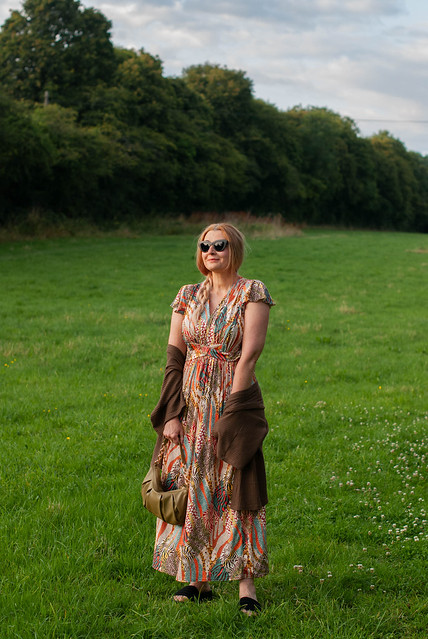A Stitch in Time: Navigating the World of Dress Suppliers
Introduction to the world of dress suppliers
Welcome to the dazzling world of dresses! Whether you’re a boutique owner, a fashion enthusiast, or someone searching for that perfect gown for a special occasion, understanding the intricacies of dress suppliers is key. From elegant evening gowns to trendy casual dresses, there is an endless array of styles and designs out there just waiting to be discovered.
But with so many options available, how do you navigate this vast landscape and find the right dress supplier for your needs? Don’t fret! In this blog post, we’ll unravel the mystery behind different types of dress suppliers and delve into their pros and cons. We’ll also share valuable tips on how to identify reliable suppliers and establish fruitful partnerships.
So grab your sewing kit and get ready as we take you on a journey through the world of dress suppliers. It’s time to stitch together success in your business while staying ahead in fashion trends!
The different types of dress suppliers

When it comes to dress suppliers, there are several different types that you can choose from. Each type offers its own unique advantages and disadvantages, so it’s important to understand what they are before making a decision.
First up, we have wholesale dress suppliers. These companies typically offer a wide variety of dresses at discounted prices. They often require minimum order quantities, which can be both a pro and a con depending on your needs. Wholesale suppliers are great if you’re looking to stock up on inventory or if you’re running a brick-and-mortar store.
Next, we have dropshipping dress suppliers. Dropshipping is becoming increasingly popular in the e-commerce world because it allows you to sell products without having to hold any inventory. With dropshipping dress suppliers, they handle the shipping and fulfillment for you, which can save you time and money.
Another type of dress supplier is the boutique supplier. Boutique suppliers usually focus on high-quality dresses that cater to specific niches or styles. They may offer more personalized customer service and unique products compared to larger wholesalers.
There are direct manufacturers who produce their own dresses. Working directly with manufacturers gives you greater control over the production process and potentially lower costs since there’s no middleman involved.
Each type of dress supplier has its own benefits and drawbacks; it really depends on your business model, goals, and budget as to which one will be the best fit for your needs.
The pros and cons of working with a dress supplier
Pros and Cons of Working with a Dress Supplier
Working with a dress supplier can have both advantages and disadvantages for your business. Let’s take a closer look at the pros and cons to help you make an informed decision.
On the plus side, partnering Dresses with a dress supplier can provide you with access to a wide range of styles, sizes, and designs. This means that you’ll be able to offer your customers more options and cater to different tastes. Additionally, working with a reputable supplier can ensure that you receive high-quality dresses that meet industry standards.
Another benefit is that dress suppliers often have established relationships with manufacturers, allowing them to negotiate better prices and pass on cost savings to their clients. This can be especially advantageous if you’re running a small business or just starting out.
However, there are also some potential drawbacks to consider. One downside is the lack of control over production timelines and stock availability. Depending on the supplier’s processes and resources, there may be delays in receiving orders or limitations in terms of product availability.
Furthermore, relying solely on one dress supplier could leave your business vulnerable if they encounter any issues or disruptions in their operations. It’s always wise to have backup options or alternative suppliers lined up as contingency plans.
Communication is key when working with dress suppliers. Language barriers or miscommunication about specifications can lead to mistakes in orders or unsatisfactory products being delivered.
In conclusion,
partnering with a dress supplier has its benefits such as access to diverse inventory and potential cost savings; however, it also comes with challenges like limited control over production timelines and reliance on one source for supplies.
It’s important to carefully weigh these pros
and cons before making a decision that aligns best
with your business goals
How to find the right dress supplier for your business
Finding the right dress supplier for your business can be a daunting task, but with some careful research and consideration, you can find a partner that meets your needs. Start by identifying what type of dresses you want to offer – are you looking for trendy, fast fashion options or high-end designer pieces?
Next, consider the reliability and reputation of potential suppliers. Look for reviews and testimonials from other businesses who have worked with them in Dresses the past. It’s also important to assess their production capabilities and ensure they can meet your demand.
Price is another crucial factor to consider when choosing a dress supplier. While it may be tempting to go with the cheapest option available, remember that quality matters too. Balance cost-effectiveness with ensuring that the dresses meet your standards.
Communication is key when working with any supplier. Make sure they are responsive and willing to address any concerns or questions promptly.
Don’t forget about sustainability! Many customers now prioritize eco-friendly options, so consider partnering with suppliers who share this commitment.
By taking these factors into account, you’ll be well on your way to finding a reliable dress supplier that aligns with your business goals and values.
Tips for working with dress suppliers
Working with dress suppliers can be a rewarding experience, but it also requires careful planning and communication. Here are some tips to help you navigate the world of dress suppliers:
1. Research and vet potential suppliers: Before committing to a partnership, take the time to thoroughly research and vet potential dress suppliers. Look for reviews, ask for references, and inquire about their product quality and delivery times.
2. Clearly communicate your needs: To ensure that your supplier understands your requirements, be clear and specific about what you’re looking for in terms of style, fabric, size options, etc. Providing visual examples or samples can also be helpful in aligning expectations.
3. Establish open lines of communication: Effective communication is key when working with dress suppliers. Make sure you have a designated point of contact who is responsive and attentive to your inquiries or concerns.
4. Set realistic timelines: When placing orders with dress suppliers, consider production lead times as well as shipping duration to avoid any unexpected delays in receiving your inventory.
5. Monitor quality control: Regularly check the quality of dresses received from your supplier to ensure they meet your standards. This may involve conducting spot checks or requesting sample garments before placing large orders.
6. Maintain strong relationships: Building a strong relationship with your dress supplier can lead to better service and more favorable terms in the long run. Show appreciation for their work by providing feedback when appropriate and being prompt with payments.
Remember that working with dress suppliers is an ongoing process that requires continuous evaluation and adjustment as needed.
Conclusion

Conclusion
Finding the right dress supplier for your business can be a game-changer. By understanding the different types of dress suppliers and weighing the pros and cons, you can make an informed decision that aligns with your goals.
Remember to conduct thorough research, read reviews, and ask for samples before committing to a dress supplier. This will help ensure the quality of their products and reliability of their services.
Once you’ve found a suitable dress supplier, establish clear communication channels and maintain open lines of dialogue. Build a strong working relationship based on trust and transparency. Regularly communicate your needs, expectations, and any changes in order to avoid misunderstandings or delays.
Keep in mind that no partnership is perfect, but by addressing issues promptly and respectfully, you can resolve conflicts efficiently. Remember that maintaining good relationships with your dress suppliers is crucial for long-term success.
Navigating the world of dress suppliers requires careful consideration and research. The right supplier can provide you with high-quality dresses at competitive prices while offering reliable service. By following these tips and guidelines, you’ll be well-equipped to find the perfect partner for all your dress supply needs!

